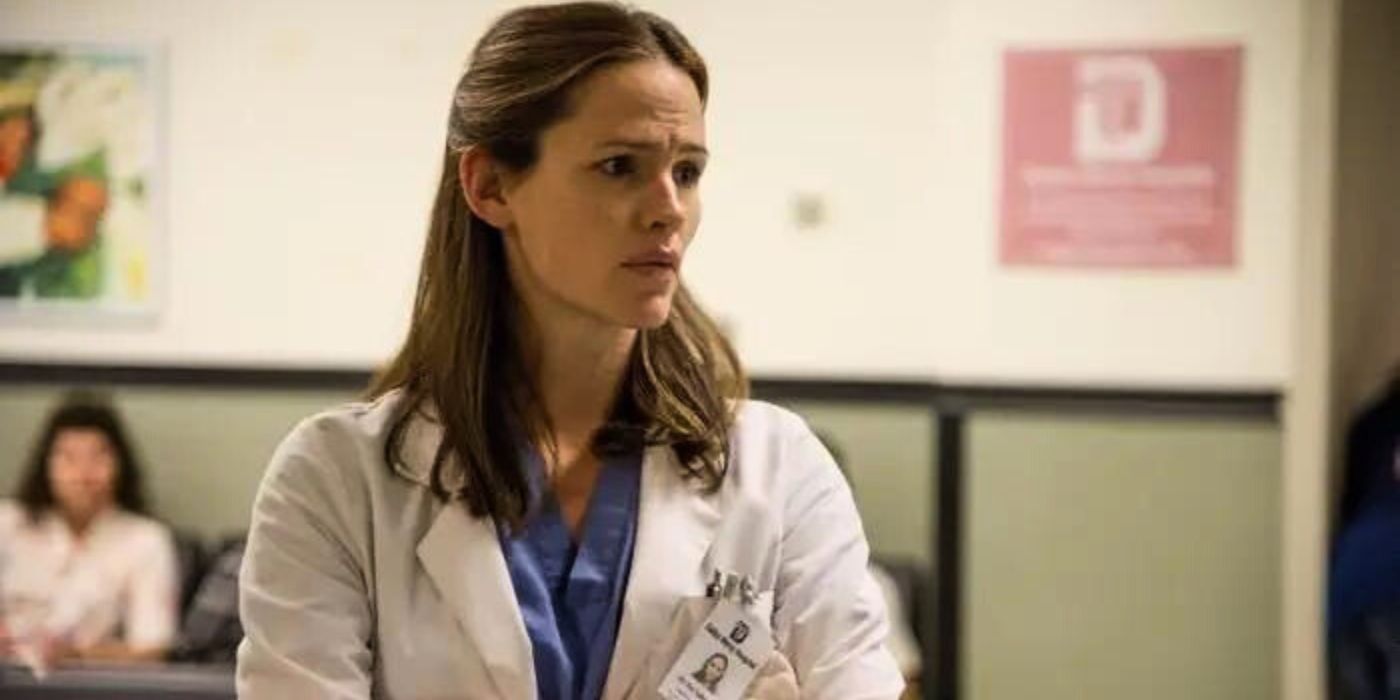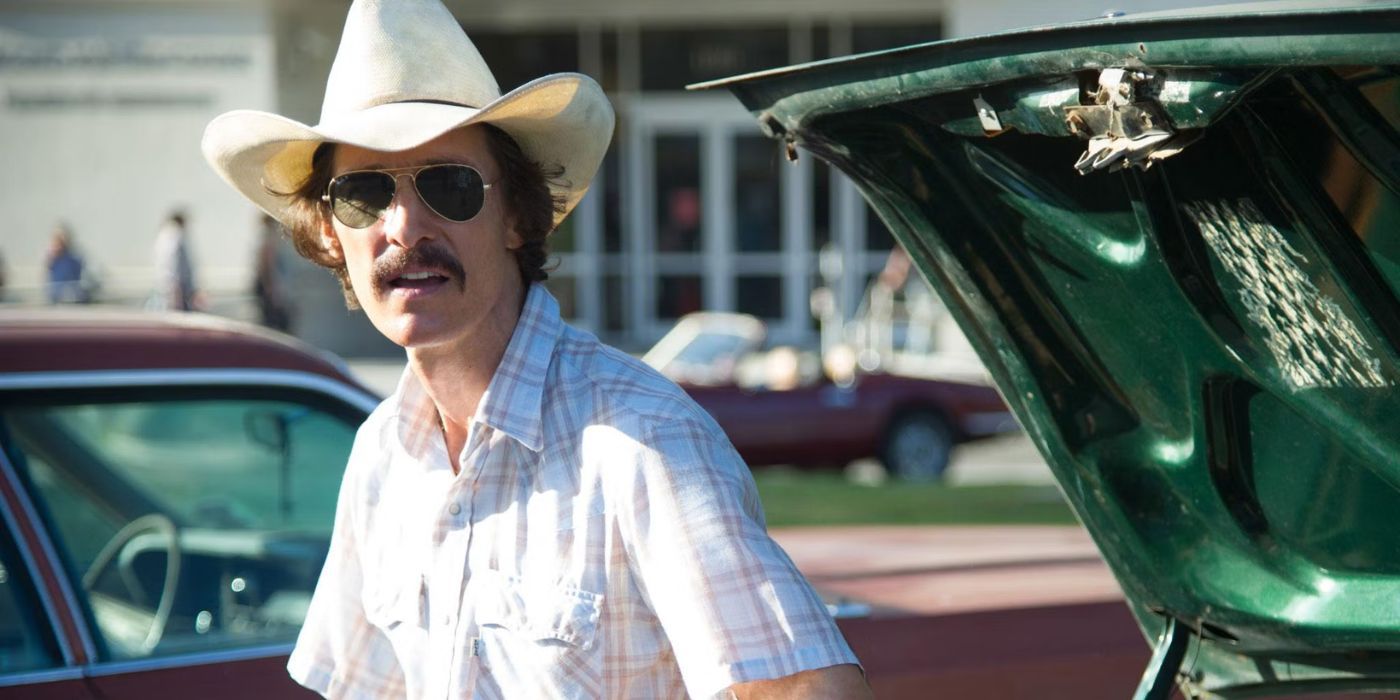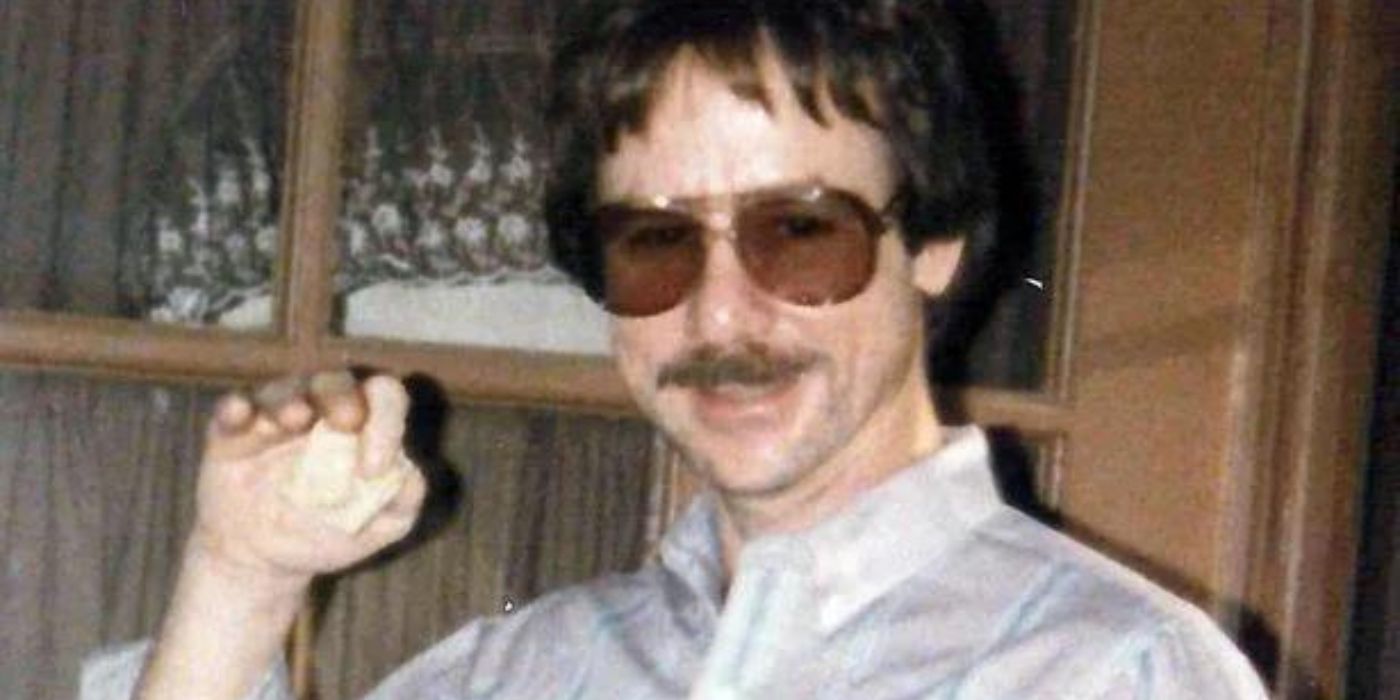This article contains discussions/references to homophobia and death.
Dallas Buyers Club is a heavily acclaimed entry in Matthew McConaughey’s filmography but historians have noted how the biopic changed certain real-life elements to evoke more drama. Helmed by Jean-Marc Vallée, the 2013 film stars McConaughey as Ron Woodroof, a rodeo cowboy diagnosed with HIV in the mid-1980s. After he comes across a banned drug that ensures a longer survival, Woodroof takes it upon himself to smuggle the drug for fellow patients. Dallas Buyers Club also explores the lives of Woodroof’s new friends, Rayon (Jared Leto), a trans woman living with HIV (who eventually becomes his business partner) and Dr. Eve Saks (Jennifer Garner), who treats individuals living with AIDS.
Upon its release, Dallas Buyers Club opened to rave reviews and both McConaughey and Leto won Oscars for their performances. While the film does offer insights into the stigmas individuals living with HIV and AIDS faced in the 1980s, revisionists have also discussed its drawbacks. For instance, Leto, who otherwise identifies as a cisgender man, sparked debates when he was cast as a trans character with audiences remarking that the casting should have been more inclusive. Similarly, the Dallas Buyers Club’s true story is majorly changed in some aspects relating to Woodroof’s life and the drug treatments described in the film.
1 Rayon Is A Fictional Character
Although Rayon is considered to be one of Jared Leto’s best roles, his casting as a trans character sparked much debate and discussion as to why producers chose a cisgender actor for the role. What is also worth noting other than the numerous opinions on Leto’s miscasting is that his character is also fictional. TIME reports that screenwriters Craig Borten and Melisa Wallack interviewed several trans-individuals living with AIDS as well as activists to create Rayon as a composite supporting character. The fictional character was supposed to represent the judgmental behavior and stereotypical assumptions that many trans people living with AIDS faced during that time.
2 Dr. Eve Saks Is A Fictional Character
Much like Rayon, Dr. Eve Saks also was absent from the Dallas Buyers Club’s true story and is a fictional creation by the film’s writers. According to TIME, Borten and Wallack interviewed real-life doctors to combine their experiences of dealing with individuals living with HIV and AIDS to create the character of Eve Saks. While both writers have not explicitly stated any direct inspirations for the supporting character, Saks also bears similarities with the late physician Dr. Linda Laubenstein, one of the first American doctors to spread awareness of the AIDS epidemic in the 1980s. Just like the empathetic Saks, Laubenstein was actively against the social stigmas associated with the disease.
3 Woodroof’s Diagnosis Details Are Changed
One of the best movies to capture the 1980s experience, Dallas Buyers Club is mostly set in the mid-1980s with Woodroof’s HIV diagnosis happening in 1985. However, Borten, who interviewed Woodroof a month before he died in 1992, adds that doctors might have diagnosed him even earlier. As reported in Slate, Woodroof told Borten about a sexual encounter he had in 1981 that “didn’t feel quite right”. He also suspected that his partner misused intravenous drugs. This incident is touched upon in Dallas Buyers Club in a brief flashback sequence. The exact year when doctors diagnosed him with HIV remains unclear.
4 Woodroof’s Personality Remains Ambiguous
Dallas Buyers Club is often mentioned as one of the best LGBTQ+ movies based on true stories but the homophobic nature of its protagonist remains ominous. Matthew McConaughey’s portrayal of Woodroof finds him playing a straight man who harbors anti-gay sentiments before his diagnosis. According to the film’s original screenwriter, Craig Borten, he confirmed that the journey from homophobe to ally is the truth (via Slate). However, other individuals who knew Woodroof personally, such as his primary physician Dr. Steven Pounders and close friend Penny Krispin, stated their surprise at how the writers perceived him since that wasn’t how they remembered him.
Moreover, in an essay for Vanity Fair, AIDS activist and Woodroof’s friend Peter Staley wrote about how he was approached to play a part in the film but the script’s inaccuracies, such as Woodroof being an initial denialist of the virus, disappointed him.
5 Woodroof Had A Daughter & Sister Who Were Left Out Of The Script
Mentioned as one of Matthew McConaughey’s favorite roles in his memoir Greenlights, Woodroof comes off as a lonely drifter in Dallas Buyers Club. He is shown to have no family and loses his friends after his HIV diagnosis following which he encounters Rayon and Eve. However, the Dallas Buyers Club true story states that Woodroof also had a sister named Sharon Woodroof Braden and a daughter named Yvette Carroll. In an interview with Daily Mail, Braden was appreciative of McConaughey’s emotionally-driven performance. Borten also told Slate that the decision to exclude them was intentional as he intended to write Dallas Buyers Club as a “character study” on just Woodroof.
6 Woodroof Never Rode Bulls
Even though Dallas Buyers Club introduced Woodroof as a rodeo, he never rode bulls. Slate reports that Woodroof was indeed a rodeo enthusiast but not a rider himself. This was again a conscious creative choice by Borten who used the bull riding scenes as a metaphor for his strength. The rodeo scenes represented Woodroof’s “struggle and ability to survive far longer than his doctors said he would”. To further quote the Oscar-nominated screenwriter, Woodroof’s journey to survive can be equated with the “lassoing of the bull.” It seems obvious now why the opening and closing scenes of the film are set in the rodeo ring.
7 Misconceptions About Medical Treatment
The drug treatments Woodroof promotes in Dallas Buyers Club can be harmful if prescribed. It is suggested that Woodroof’s drug and vitamin regimen was more effective than the FDA-prescribed drugs. However, this claim is debatable. According to The Washington Post article, “What Dallas Buyers Club got wrong about the AIDS crisis”, the experimental drug, Peptide D (which Woodroof promoted) was useless for many individuals living with AIDS and HIV, and nobody uses it today. The same article also mentions that DDC, another drug promoted by Woodroof, was indeed effective as an antiviral treatment but it had side effects like nerve damage.
Throughout the film, Woodroof also actively criticizes the drug AZT (azidothymidine). But by the end, he is shown using it and it’s mentioned that doctors began prescribing it in smaller doses. Later, AZT became ineffective as the HIV mutated but medical historian Jonathan Engel in The Epidemic: A History of AIDS writes that in the 1980s, AZT was an effective treatment to increase mortality. Dallas Buyers Club is true in the sense that Woodroof promoted his unconventional medical views. However, the film’s implication that such treatments work better than hospital-issued drugs has upset many observers. Hence, Salon even accused the film of treading close to “endorsing pseudoscience”.
Source: TIME, Slate, Vanity Fair, Daily Mail, The Washington Post
This story originally appeared on Screenrant







